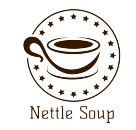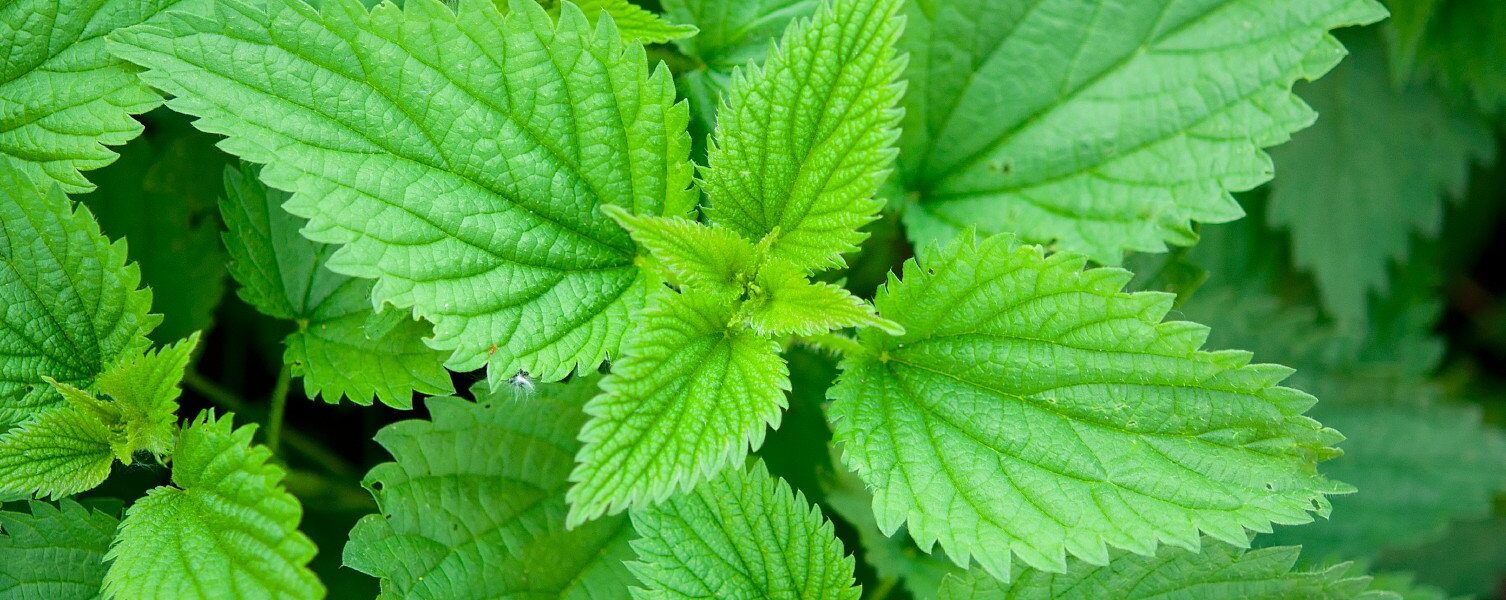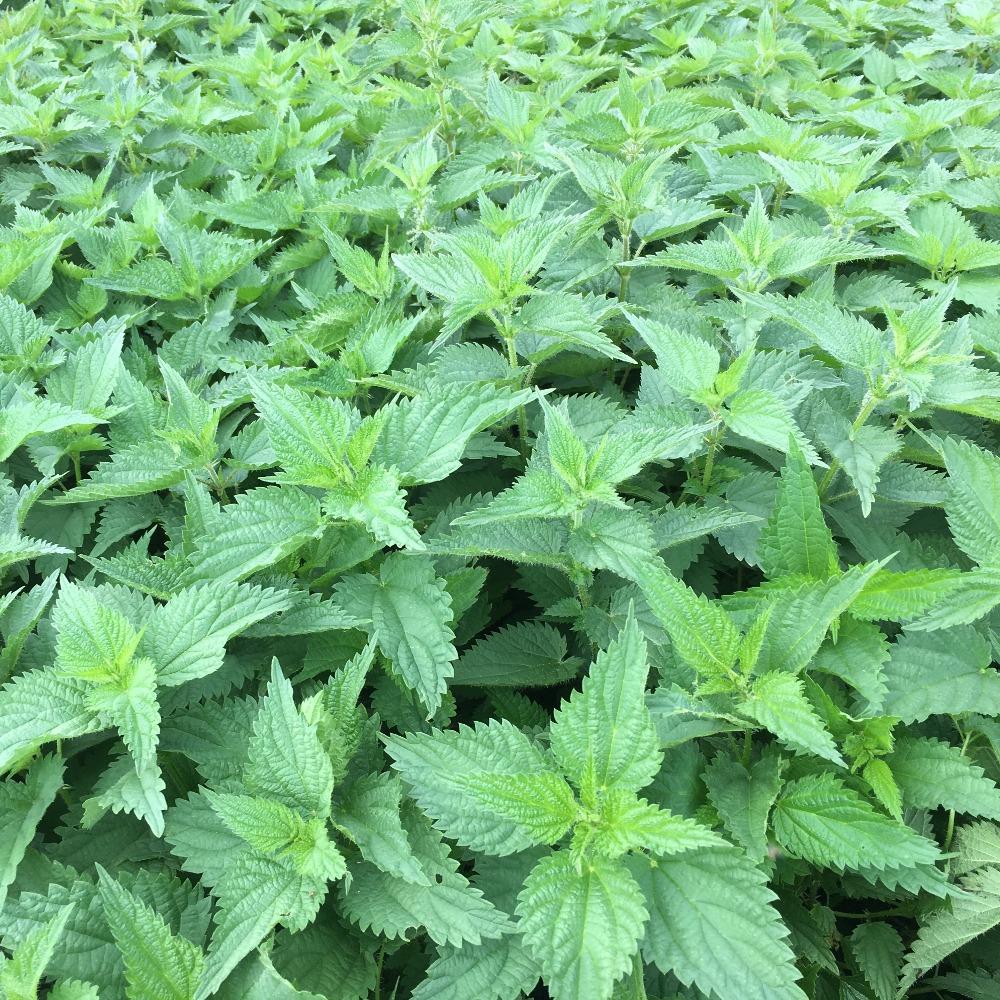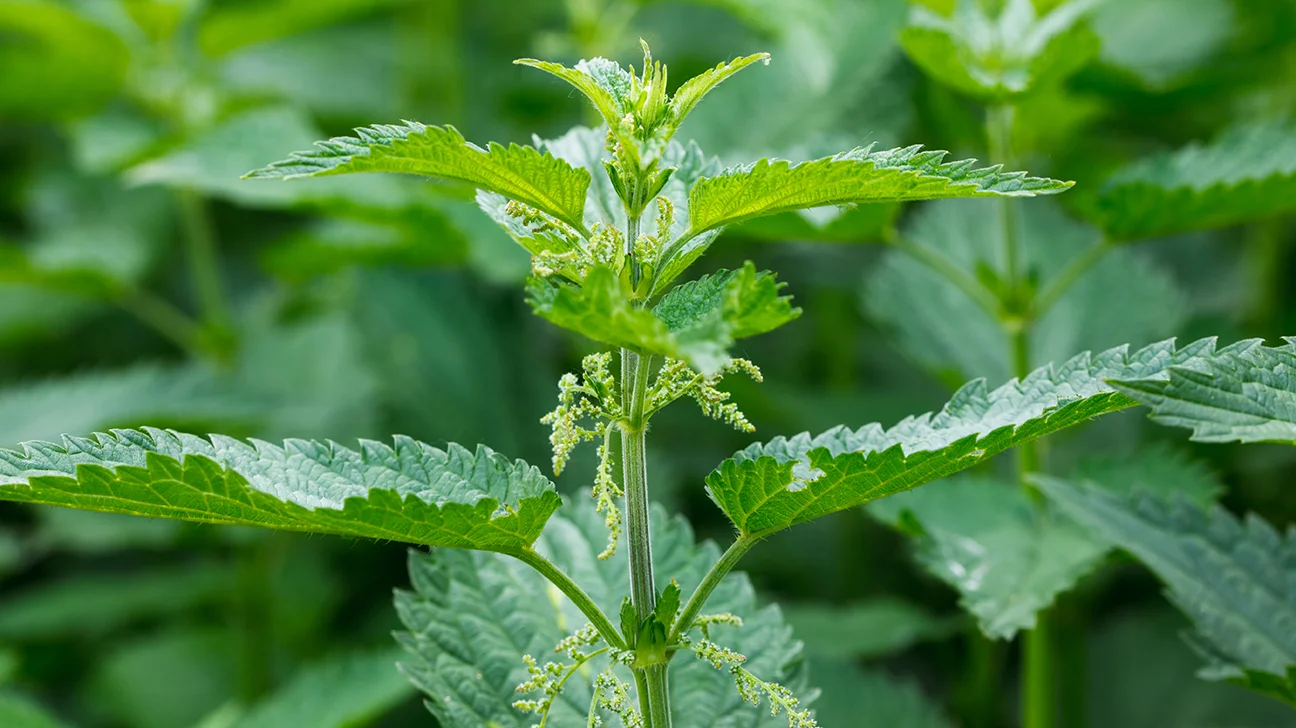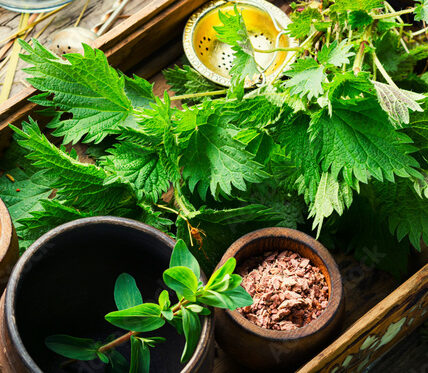|
Getting your Trinity Audio player ready...
|
Harvesting and Drying Nettle Leaves has been made so easy. Stinging nettles, often dismissed as pesky weeds, hold surprising potential as a valuable source of nutrition and natural remedies. Nettle leaves boast a wealth of vitamins, minerals, and anti-inflammatory properties, making them a versatile addition to your kitchen and medicine cabinet. However, their infamous sting demands caution. Fear not, intrepid foragers! This guide equips you with the knowledge and techniques to safely harvest and dry nettle leaves, transforming them from a stinging adversary to a culinary and medicinal ally.
Identifying Your Stinging Friend
The key to safe harvesting lies in proper identification. Stinging nettles (Urtica dioica) are easily recognizable by their heart-shaped leaves with serrated edges and prominent veins on the underside. Tiny hairs cover the leaves and stems, injecting a histamine-like substance upon contact, causing the familiar sting. Look for nettles in moist, nitrogen-rich areas like woodlands, clearings, and around streams. They thrive throughout spring and summer, making them readily available for much of the year.
Gearing Up for a Sting-Free Harvest
Preparation is paramount for a successful and sting-free nettle harvest. Here’s what you’ll need:
- Thick Gloves: Opt for heavy-duty gardening gloves made of leather or thick canvas to protect your hands completely. Rubber gloves may not offer sufficient protection.
- Long Sleeves and Pants: Dress in long clothing to minimize exposed skin.
- Scissors or Sharp Knife: Sharp tools ensure a clean cut and avoid unnecessary damage to the plant.
- Basket or Bag: Choose a breathable container for your nettle leaves to prevent them from getting crushed or damp.
Harvesting with Confidence
Now that you’re armed with the right gear, let’s explore the safe harvesting technique:
Timing is Key: Harvest young nettle leaves before they flower, typically in the early spring or after a summer pruning. Young leaves are more tender and have a milder flavor.
Approach with Caution: Hold the nettle stem firmly with your gloved hand, grasping the stem above the pair of leaves you intend to harvest.
Snip and Retreat: Using your scissors or knife, make a clean cut just above the leaf node where the leaf meets the stem. Quickly move your hand away from the nettle after each cut to avoid accidental contact.
Harvest Selectively: Only pick the top 2-3 pairs of leaves from each stem. This promotes healthy regrowth for future harvests.
Respect the Plant: Avoid harvesting from heavily polluted areas or areas with potential pesticide contamination. Leave a section of the nettle patch untouched to ensure the plant population thrives.
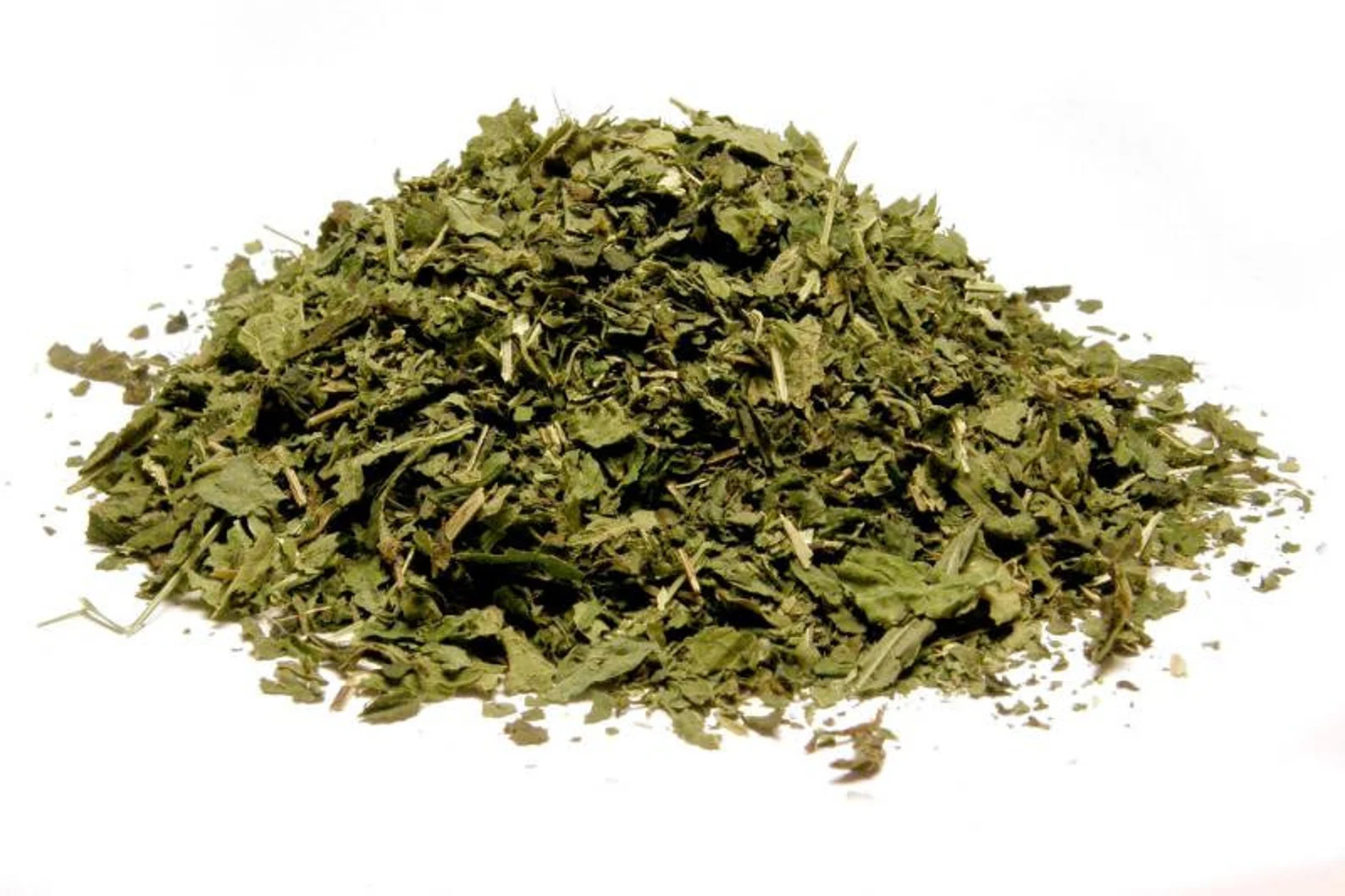
Pro Tip
When harvesting and drying nettle leaves, wear protective gloves to avoid stings from the plant’s tiny hairs. Harvest young nettle leaves in the spring for the best flavor and nutritional value. To dry nettle leaves, spread them in a single layer on a clean, dry surface away from direct sunlight. Allow the leaves to air dry completely before storing them in an airtight container. This ensures that you can enjoy the benefits of nettle leaves year-round without worrying about the stinging sensation.
Drying Your Nettle Bounty: From Fresh to Shelf-Stable
Once you’ve collected your nettles, it’s time to preserve them. Drying is the most effective way to extend their shelf life and unlock their full flavor and medicinal potential. Here are two popular methods:
Air Drying
- Wash the harvested nettle leaves gently with cool water to remove any dirt or debris.
- Pat them dry with a clean cloth or paper towel.
- Spread the leaves out in a single layer on a clean drying rack or mesh screen.
- Choose a well-ventilated location with good air circulation and indirect sunlight. Direct sunlight can degrade the leaves’ potency.
- Turn the leaves over regularly to ensure even drying.
- The drying process can take anywhere from 3-7 days, depending on the humidity and air circulation.
- The leaves are dry when they crumble easily between your fingers.
Dehydrator Drying
- For a faster drying option, consider using a dehydrator.
- Wash and dry the leaves as described in the air-drying method.
- Arrange the leaves in a single layer on the dehydrator trays.
Follow the dehydrator’s instructions for optimal drying temperature (around 100°F or 38°C).
- Drying time can vary depending on the dehydrator’s settings and the amount of leaves. Check on them regularly and remove them once they become brittle and crumble easily.
Nettle Fertilizer: Nettles make a fantastic organic fertilizer. Steep a handful of dried nettle leaves in water for a few days and dilute the liquid before using it to nourish your plants.
Companion Planting: Nettles can attract beneficial insects to your garden while deterring pests like aphids. Consider planting them strategically around your more delicate vegetables.
Once Dry
- Regardless of the drying method, store your dried nettle leaves in airtight containers in a cool, dark place. This can be a pantry, cupboard, or even a sealed jar in the refrigerator. Properly dried nettle leaves can last for up to a year when stored correctly.
Unlocking the Potential of Nettle Leaves: From Tea to Table
Now that your nettle leaves are dry and ready to use, explore the vast array of possibilities they offer:
Culinary Delights
- Nettle Tea: Perhaps the simplest and most popular use, nettle tea is a refreshing and invigorating beverage. Steep 1-2 teaspoons of dried nettle leaves in hot water for 5-10 minutes. Enjoy it plain or add honey and lemon for a touch of sweetness.
- Nettle Soup: Nettle leaves add a unique flavor and a boost of nutrients to soups and stews. Finely chop the leaves and sauté them with onions and garlic before adding them to your broth.
- Nettle Pesto: Substitute nettles for basil in a classic pesto recipe. The leaves offer a similar herbaceous flavor and a vibrant green color to your pasta dishes.
- Nettle Omelette: Add a handful of chopped nettle leaves to your omelette batter for a protein-packed and flavorful breakfast.
Natural Remedies
Sting Relief: Ironically, nettle tea can actually soothe the sting of other nettles! Apply a cooled nettle tea compress to the affected area for relief.
Hay Fever: Nettles are believed to have antihistamine properties, potentially offering some relief from seasonal allergies. Consult with a healthcare professional before using nettles for this purpose.
Skin Conditions: Nettle tea compresses are traditionally used to soothe eczema and other skin irritations.
Summary
While nettles are generally safe for most people, it’s always recommended to consult with a healthcare professional before using them medicinally, especially if you are pregnant, breastfeeding, or taking any medications. By following these tips and exploring the vast potential of nettles, you can transform this “stinging adversary” into a valuable asset in your kitchen, medicine cabinet, and even your garden. So, next time you encounter a patch of nettles, remember the hidden power they hold and embrace their versatility –
FAQs
Here are some frequently asked questions to address any lingering doubts about the world of nettles:
Can I harvest nettle leaves all year round?
Technically, yes. However, the leaves are most tender and flavorful in the early spring or after a summer pruning. Avoid harvesting them once they flower, as the taste becomes bitter and the sting can be more potent.
Do I need to wear gloves when handling dried nettle leaves?
No, the stinging hairs lose their potency once the leaves are completely dry. However, if you have sensitive skin, wearing gloves might still be a good idea to prevent any potential irritation.
Are there any recipes specifically designed for cooking with nettles?
Absolutely! Many cookbooks and online resources offer recipes highlighting the culinary uses of nettles. Explore vegetarian and vegan recipes that utilize nettles as a protein source or a flavorful addition to soups, stews, and pestos.
Can I use fresh nettles instead of dried ones?
Yes, you can! Just be aware that fresh nettle leaves have a higher water content, so you might need to use a larger quantity to achieve the same flavor intensity as dried leaves. Additionally, blanching fresh nettle leaves for a minute before using them can help deactivate the stinging hairs and remove some bitterness.
Where can I find more information about the medicinal uses of nettles?
While nettles have been used in traditional medicine for centuries, it’s important to consult with a qualified healthcare professional before using them for any specific health condition. They can advise you on the appropriate dosage and potential interactions with any medications you might be taking.
You may find this useful:
- Other Nettle Recipes
- How to Prepare and Preserve Stinging Nettle in an Easier Way
- Making Clothes using Nettles
- Nettles : Exploring the Nutritional and Culinary Delights
